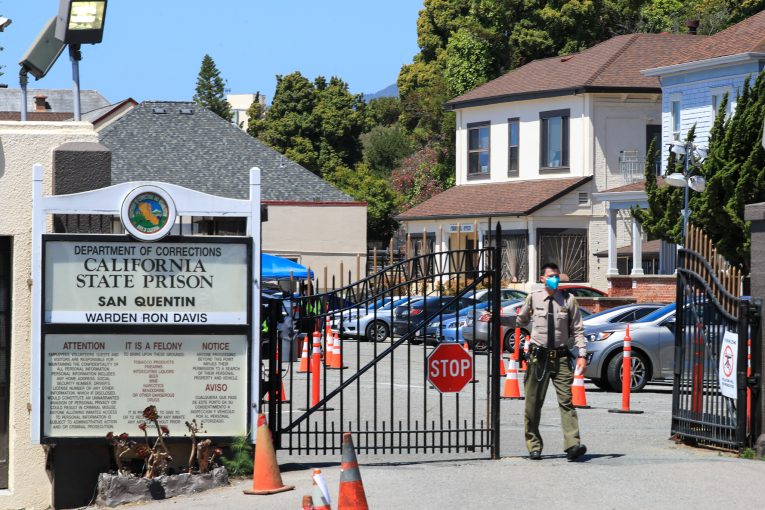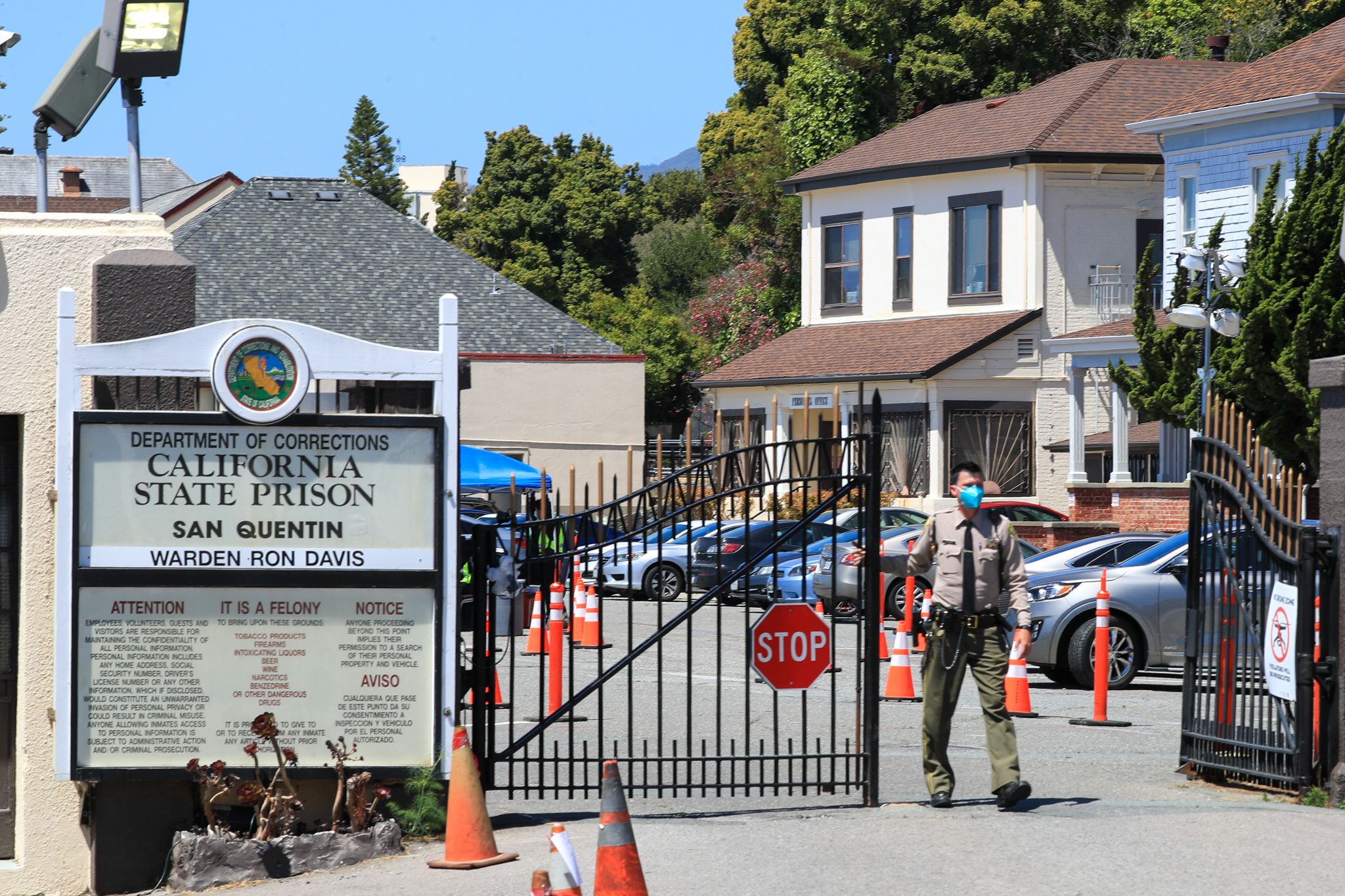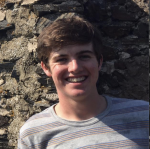
 By Michael Wheeler and Koda Slingluff
By Michael Wheeler and Koda Slingluff
MARIN, CA – An evidentiary hearing investigating the deadly outbreak of COVID-19 at San Quentin State Prison continued Tuesday in Marin County Superior Court after a break for the Memorial Day holiday—prison officials painted a starkly different picture than prisoners and outside medical witnesses.
The health and safety protocols of the prison remained in the spotlight as the two parties look to establish the conditions in place during the transfer of inmates from the California Institute for Men in Chino, California.
The witnesses of the day primarily discussed the employee perspective of the outbreak, detailing conduct violations such as a notorious photo of a group of employees and supervisors posing maskless on site during the pandemic.
Channing Sheets, an official with the Occupational Health and Safety Administration, testified before the morning break. Sheets had reported several OSHA violations rooted in San Quentin’s employees during the coronavirus outbreak, including some marked “willful-serious.”
Jason Bishop, who temporarily joined the San Quentin administration in July 2020 and served as chief deputy warden from August 2020 to March 2021, next took the stand.
Questioned by Michael Lagrama, a deputy California attorney general, Bishop gave detailed testimony regarding the COVID-19 protocols in place at the prison during his time employed there.
Bishop informed the court that during his time at San Quentin, every employee had to go through a COVID-19 clearance process to gain access to the prison grounds. They had to answer screening questions and, if allowed admittance, were given a wristband signaling their compliance with COVID-19 guidelines.
In addition to the clearance process, staff also underwent regular virus testing, said Bishop, adding, “For the most part, all staff were required to test on a weekly basis,” with the exception of a short period when the regularity of testing diminished to biweekly.
Refusal to be tested resulted in the employee being denied admittance to the prison, with administrative action, in particular the issuance of letters of instruction, potentially taken in the case of sustained obstinance.
Like inmate tests, results for staff tests had an initial lag time between the test and results being issued, of five to six days, when Bishop began work at San Quentin last July. By the time he left, however, the reporting time had gradually diminished to two to three days.
The inmate population was also subject to serial COVID-19 testing, although Bishop could not remember the specific frequency of testing, saying, “It was either weekly or biweekly. We managed to get through the entire population.”
Test results were tracked, although tracking occurred outside of the purview of San Quentin administrators, he testified.
Consequences also existed for inmates who refused to test, he said. In that event, the inmate would be isolated from the general population indefinitely, or until medical staff could convince the inmate of the medical necessity of the testing protocols.
Bishop also stated that a mask policy existed at the prison prior to his arrival, which shifted from initial allowance of cloth masks to a prison-wide mandate of surgical masks.
He said the masking requirements differed by person and circumstance: any inmate housing units under quarantine or isolation were required to wear N95 masks, as did all healthcare workers at the prison, who also faced additional PPE requirements in alternative care sites dedicated to COVID-19 recovery.
Staff were supposed to wear masks at all times, while the only times an inmate could remove their mask was within their cell, while having a socially distanced meal, or exercising in the yard.
Both inmates and staff were trained on how to wear PPE, although there were exceptions to general compliance. In particular, Bishop mentioned an incident involving staff in which 25 maskless prison workers gathered for a photo to send off a retiring colleague.
The photo was posted on social media by one of the non-compliant staff members, and prison administrators identified and issued letters of instruction to all who appeared in the photo. Two supervisors were also pictured and both received an official reprimand.
In addition to masking, frequent cleaning of prison equipment and facilities also occurred, Bishop promised, although previous witnesses for the plaintiffs said the cleaning was virtually non-existent.
As part of their COVID-19 mitigation efforts, prisoners’ access to exercise was severely curtailed, added Bishop, adding that only at the end of August was prisoner access to the exercise yard restored; otherwise, prisoners were only allowed to leave their cell to shower, attend healthcare appointments, or “access some essential services within the housing unit.”
While prior to the pandemic 200-300 inmates might exercise in the yard at one time, about 100 were allowed in during each yard session from the resumption of yard access until the end of Bishop’s time at San Quentin.
Another impacted service was San Quentin’s library system. Along with a standard library, the prison has a legal library where prisoners can research and prepare for legal matters. Prisoners with pending court dates have priority access to this library.
During the outbreak, only those with priority access could get into the legal library. Prisoners without an upcoming date were unable to access or research law.
Lagrama and Bishop discussed these COVID-era restrictions while circling back repeatedly to the issue of responsibility. Bishop described the restrictions, while Lagrama inquired who imposed them. Each time without fail, Bishop placed the responsibility on California Correctional Health Care Services (CCHCS).
Bishop pointed out that all contact tracing was done by CCHCS staff. Describing contact tracing, he said that CCHCS staff would be responsible for “basically isolat[ing] it and try[ing] to contain any outbreaks.”
If a prisoner tested positive, they would be moved to the adjustment center. Although prison staff was in charge of facilitating such moves, Bishop said, it was CCHCS staff who determined who should be moved.
The adjustment center was occupied by death row inmates, as well as inmates who had a history of assaulting staff.
When the prison determined to use the adjustment center, they had to move “every single one of those dangerous felons out of the unit.” Bishop notes that this choice “placed staff at a great personal risk… but we did that to support the healthcare need that COVID presented.”
Lagrama soon pivoted to asking about the Incident Command Post (ICP). The ICP was a group of the top prison officials on staff, who would meet twice every weekday to discuss and monitor the coronavirus situation on ground.
Among those involved were San Quentin’s chief CEO, executive officer, chief physician, correctional health services administrator, public health nurse, and “all of the executive staff on the healthcare side.”
For monitoring long-term programs, San Quentin uses Program Status Reports (PSRs). Each day, the ICP put out a PSR to keep staff and prisoners up to date. Showing an example to the courtroom, Bishop explained that the various check boxes showed where and what was happening.
“You have different boxes,” he said, adding “There’s one that identifies the area of infection, inmates affected, reason for the quarantine, then you have how movement will be facilitated, how inmates will be facilitated, how canteen services will be impacted, packages, phone calls, religious services.”
On a second page is a ‘remarks’ section which provides more detailed information. The example PSR had a bolded remark stating that outside recreational activity would be permitted in a list of areas.
To close out his direct examination, Bishop told the court, “I have 0 reservations when I say San Quentin’s staff did everything they possibly could to safeguard themselves from the outbreak and safeguard the inmate population.
“I will say the department didn’t feel the same urgency as the executive staff, [however] I have 0 doubt whatsoever that the institution and its warden had the inmates’ best interest in mind even before the outbreak,” he admitted.
Bishop’s reference to ‘the department’ was alluding to the CDCR’s headquarters, which the prison is alleging was partly responsible for the deadly outbreak.
The headquarters would come up again in examination by Tom Brown, an attorney on the petitioner side.
Powerfully, Brown began examining Bishop by asking the name of the first prisoner who died of coronavirus. When Bishop did not know, Brown asked the name of the most recent victim. Although Bishop knew immediately that 28 had died total, he did not know any of the names of the deceased.
They then discussed the adjustment center. Once the existing population was moved, the adjustment center was used to house prisoners who tested positive for coronavirus. Prisoners who refused to test were also placed in the adjustment center.
Brown asked if those who refused testing knew they would be put in the adjustment center. While Bishop could definitively say that headquarters directed the institution to publish that information to them, he did not recall how this information was distributed. It was not in the PSRs.
The first witness of the day came up as Brown inquired how deeply the ICP had looked into external recommendations. There were a variety of recommendations given, from the county government to the office of the inspector general and physicians from the University of California.
Sheets had his own recommendations, speaking from the perspective of OSHA violations for prison employees.
Bishop admitted that although Sheets’ recommendations were discussed at ICP meetings, he could not recall if any of the recommendations were implemented. He also could not remember if the inspector general’s recommendations were implemented, and seemed sure those from the university physicians were not considered.
Oddly, Bishop acknowledged that the warden was “the individual with final authority to grant access” into the prison, immediately after insisting that a CCHCS staff nurse “had the final say.”
The recommendation from the University of California physicians and other parties was to reduce the population by 50 percent. Yet, in a similarly put series of responses, Bishop said that the warden did not have any say in the decision not to reduce the prison’s population.
“The decision was to wait for directions from headquarters which would guide us how to proceed,” he said when asked what choice he had made about population reduction.
In a redirect examination, Lagrama reinforced that the safety responsibility fell on CCHCS rather than prison employees. Moving inmates into the adjustment center, though handled by custody, was still determined by things beyond San Quentin’s control, he indicated.
“Custody is the organization that actually facilitates the move once the determination is made. CCHCS makes the decision to make them move,” Bishop said to Lagrama.
The final witness of the day was Nicole Avila, the Healthcare Associate Warden of San Quentin. Avila had worked for CDCR for 18 years, spending 15 of those years with San Quentin. She became the Healthcare Associate Warden back in February of this year.
Avila mostly discussed current safety protocols at the prison, painting a picture of sanitary and diligent care. Avila was also involved with the ICP. She held the title of Incident Commander, where she conducted the twice daily meetings.
Asked about her most recent ICP meeting, Avila said that they discussed “testing schedules, vaccination schedules, if anyone is isolated, areas of potential transmission. We’re currently in an opening phase. We don’t have any inmates in isolation right now.”
She also discussed two situations where she saw people not wearing masks at San Quentin.
She described an employee in December 2020 to whom she gave a disciplinary “letter of instruction” when she saw the employee without a mask. In the other situation, a month ago, Avila saw a group of death row prisoners in a yard without masks and contacted the yard manager.
These statements from Avila likely were part of establishing credibility for a bigger argument.
They showed Avila’s duties, responsibilities, and examples of her behavior at work. Unfortunately, the groundwork Avila’s examination laid was left as groundwork. The court ended for the day Tuesday at 4:28 p.m. and will reconvene Wednesday morning to continue with Nicole Avila.
 Michael Wheeler is a junior at UC Davis, where he studies History and Economics. He is from Walnut Creek, California.
Michael Wheeler is a junior at UC Davis, where he studies History and Economics. He is from Walnut Creek, California.
Koda is a junior at UC Berkeley, majoring in Philosophy and  minoring in Rhetoric. He is from Ventura, CA.
minoring in Rhetoric. He is from Ventura, CA.
To sign up for our new newsletter – Everyday Injustice – https://tinyurl.com/yyultcf9
Support our work – to become a sustaining at $5 – $10- $25 per month hit the link:




